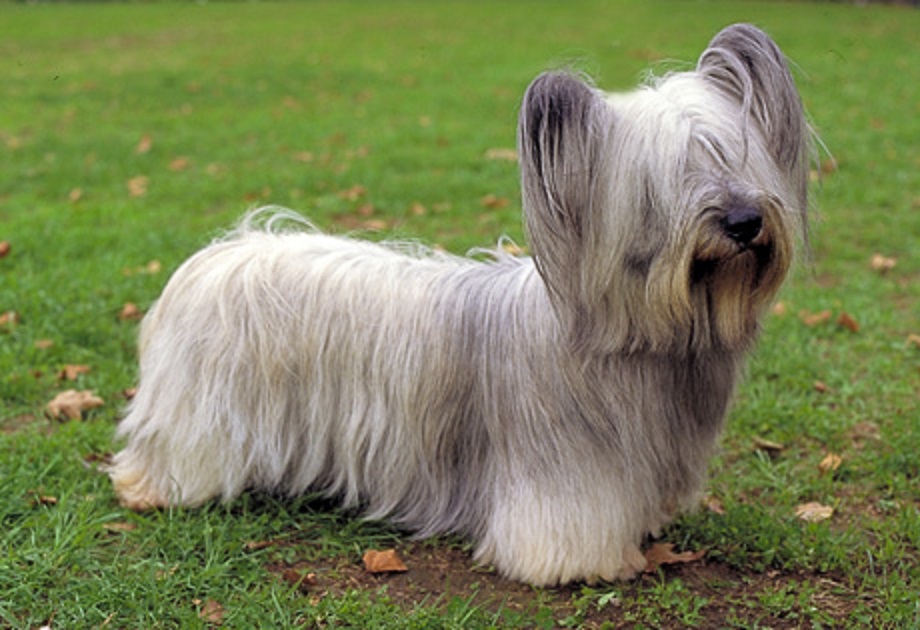
Skye Terrier

Navigate through the tabs
Navigate through the tabs below to view the breed's info of your interest.
The breed's info is divided in four sections; namely:
the breed's history ,
the breed's main stats ,
the dog's potential health issues
and finally, how the breed scored in 26 different categories.
All the above information should give you a respectively good overview for the dog of your interest.
Dog Breed's Main Info
The Breed's History:
Scotland has long been a stronghold of small plucky terriers, and the Skye Terrier is among the oldest of them. They developed along the west coastal area, where they hunted fox and otter from among the rocky cairns.
The purest of these dogs were found on the Isle of Skye, and the dogs were then named Skye Terriers. Skye Terriers were first described in the sixteenth century, when it was already noteworthy for its long coat. Some confusion exists in tracing its history because, for a certain time, several different breeds had the same name "Skye Terrier".
The loyal dog, present under the petticoat of Mary, Queen of Scots at her execution, has been ascribed as a Skye Terrier. In 1840, Queen Victoria made the breed fancy, keeping both drop-(floppy) and prick-(upwards) eared dogs.
This highly increased its popularity in many of the high societies and among commoners, which are very high class. Soon enough, the Skye Terrier came to America because of its extreme popularity throughout its country and some others. The AKC recognized the breed in 1887, and it quickly rose to the show scene position. Even though this was a strong start and the breed's great appearance, its popularity has dropped.
Now it is among one of the least known terriers. Many people are unaware of this breed's old popularity because it is not famous now.
Country of Origin:
Scotland
Breed Group:
Terrier
Height:
9 inch. to 10 inch. (22,86 to 25,4 cm)
Weight:
25 to 40 pounds (11,33 to 18,15 Kg)
Life Span:
12 to 14 years
Potential Health Issues:
Degenerative Disc Disease,
Mammary Cancer,
Hemangiosarcomas,
Autoimmune Disease,
Hyperthyroidism
Adaptability
Apartment Living:
First Time Owners:
Sensitivity:
Being Alone:
Cold Weather:
Hot Weather:
Friendliness
Affection With Family:
With Kids:
With Dogs:
With Strangers:
Health and Grooming
Shedding:
Drooling:
Easy To Groom:
Overall Health:
Weight Gain Potential:
Size:
Training
Easiness:
Intelligence:
Mouthiness:
Prey Drive:
Barking or Howling:
Wanderlust:
Need For Exercise
Energy Level:
Intensity:
Exercise Needs:
Playfulness:
Our Mobile Application
Check out Our Mobile Application "Dog Breeds Central"
